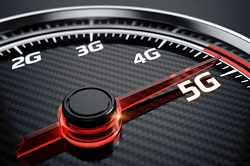5G mobile networks brought closer to roll-out
The next generation of mobile networks – 5G – is set to be faster, super-efficient, more reliable, have a lower device battery consumption, and be better designed to allow the ‘Internet of Things’ to take hold. EU-funded project METIS-II is driving progress in fifth generation networks, in line with the European Commission’s goal to roll-out 5G networks by 2020. The project builds on its predecessor, METIS, which built a worldwide consensus on the requirements and key technology components of 5G. ‘METIS-II and METIS have played a large part in defining what 5G is and what capabilities it will have. The project is not solely responsible for the start of 5G, but could take a large chunk of the credit. We are not yet fully aware of the changes 5G will have on society, but they are likely to be significant,’ says Olav Queseth, METIS-II Project Coordinator and Master Researcher at Ericsson. During the project, METIS-II researchers developed 5G Radio Access Network (RAN) from the visions and concepts drawn-up by the industry in 2015, to a level that is now ready for wide-scale testing and standardisation. ‘METIS-II put the pieces of technology we had together to a complete system, and developed the missing pieces of the puzzle. We also had a broad set of partners to build a consensus across the industry,’ explains Dr. Queseth. In effect, the project drew the dots between architecture, protocols, physical infrastructure and spectrum to make the system work. The project also developed a ‘connected inactive state’ which allows a device to wake up quicker after being inactive for some time, reducing power consumption and latency. It also developed a Radio Access Network paging system which allows parts of the access network to initiate a connection to a terminal such as a phone or a temperature sensor. Currently, only the core network – the part of the network which connects the access part to the internet and phone networks - can initiate access which limits the number of devices connected to the network. 5G networks are likely to see the network costs of transporting data fall, while also allowing the volume of data demanded to rise. Its impact will also ease the roll-out of the Internet of things in a wide range of sectors including transport, healthcare, energy, manufacturing, media and entertainment. With 5G, mobile data users should experience better access to multimedia from their smart devices, better hotspots able to operate with a higher number of users, and an increasingly seamless user experience. Meanwhile, 5G will allow technological advances including wireless control of industrial manufacturing processes, remote medical surgery, and the automation of power distribution in a smart grid. It will also allow for a larger number of devices to be connected to the network compared to 4G technology. With the project now over, project partners are continuing their 5G research, including as part of other EU-funded projects. For Dr. Queseth, his research will now focus on spectrum regulations in Europe and globally to ensure that there is enough spectrum available for the rollout of 5G.







